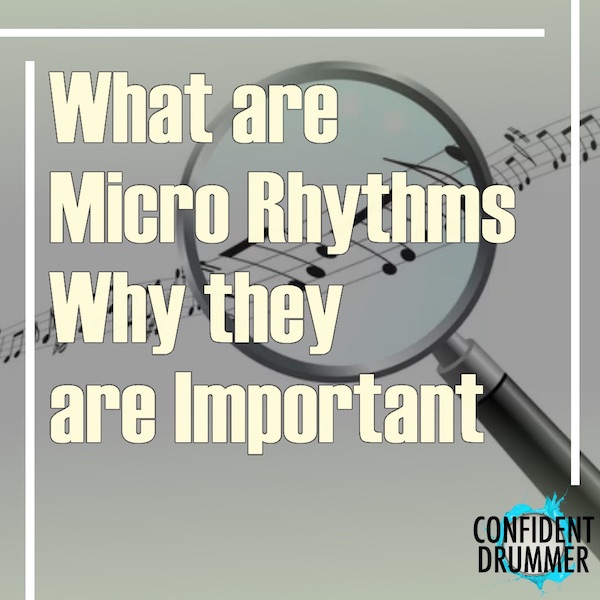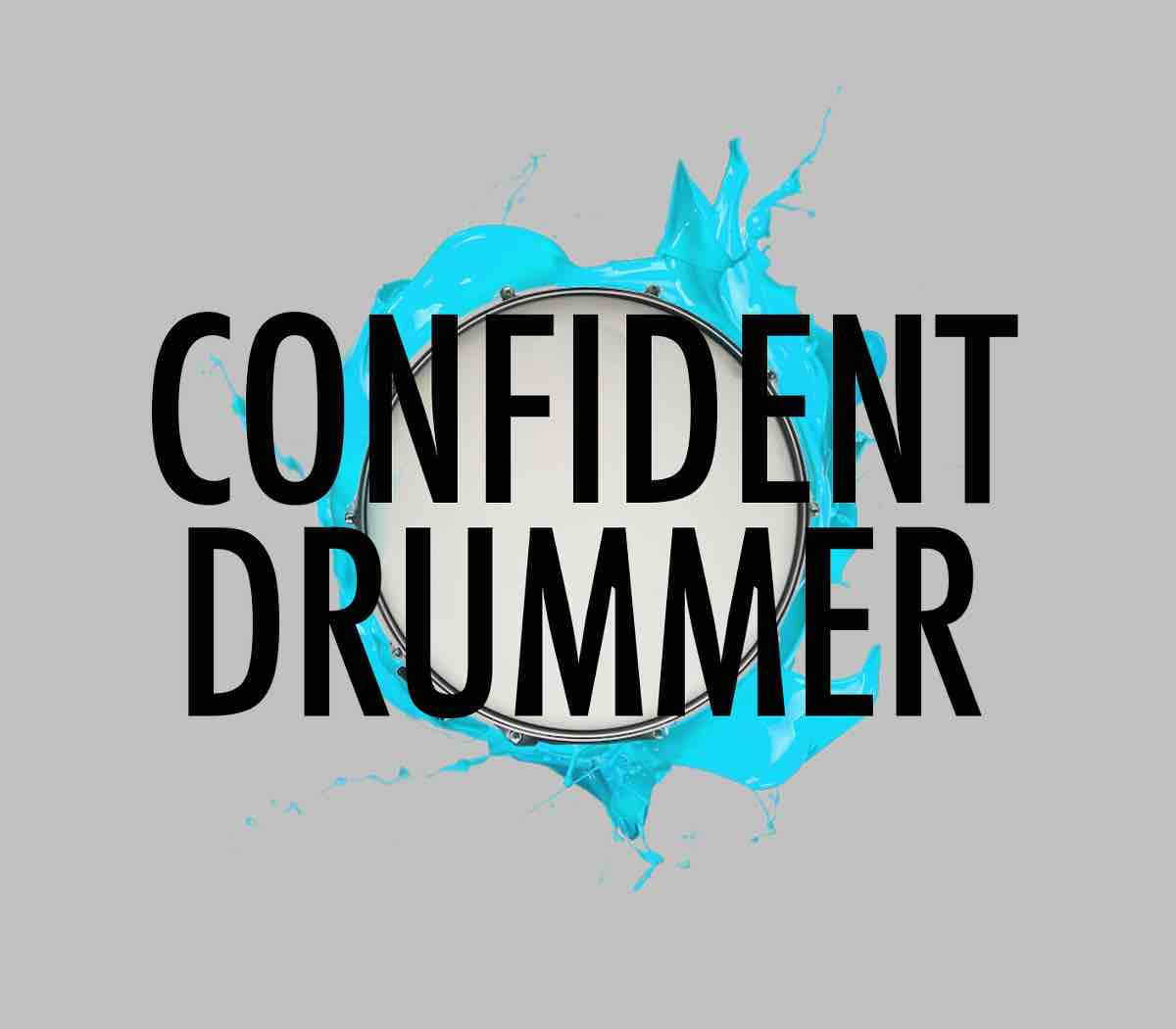In recent years there has been a lot of research about micro rhythms and micro timing in the drumming community.
My definition of micro rhythms is that they are rhythmic nuances that go beyond the basic solutions allowed by the figures and note values available in notation.
Therefore, music notation doesn’t permit to reproduce them accurately, because they are too subtle to be converted in note symbols that can represent them in a music score.
Yet, as it’s obvious, all quality music, when we listen closely to what’s going on, uses micro rhythms at some level or another.
Musical notation is nothing but a convention, a visual system, which facilitates communication between musicians and allows to write down information that would otherwise be impossible to memorize and share as quickly.
Although this system is very practical, it’s at same time quite limited and not very flexible, since it puts everything on grids that are inevitably rigid.
Because of this fact, as we know, we have to interpret everything we read (here by interpretation we mean the most advanced version of it, the one related to subtleties).
These grids are useful to communicate with one another, to orient ourselves, but they cannot contain the infinite number of details expressive and artistic music is made of.
In the attempt to make up for these limitations there are lots of terms that enhance music notation and can be added to a score to hint to those details: ‘rubato’ (free adjustment on tempo), ‘accelerando’ (speeding up), ‘adagio’ (slowly with great expression), ‘calando’ (going slower and softer), ‘mosso’ (more lively, quicker), ‘vivace’ (lively and fast).
Many of these musical indications are in Italian, since the vast majority of the most important early composers were Italian.
There are dozens of them and they try to clarify details related to tempo, expression, tone and dynamics. Precisely all the subtle nuances that music notation can’t reproduce.
However, in many traditions, especially non-Western ones, music has evolved in ways that can’t even be described with these tools, and that can be played correctly only after a long immersion in the specific musical culture.
Some good examples are Brazilian, Cuban and African rhythms. Western notation, the one we currently use to read and write music, has developed without that influence and without including those elements, which is why it does not offer the possibility to transcribe them, even though it allows for a good level of approximation.
At the same time, trying to use our notation to accurately write those rhythms is an impossible task, even if we make the effort to experiment with extreme mathematical combinations, because they end up creating impractical figures which even great musicians would find hard to play.
Those nuances are tiny deviations from common straight patterns, and the variations they involve are indeed called Micro Rhythms.
Such deviations are not accidental, they are specific and definite. It’s just that they can’t be represented using current notation. Fortunately this is not a problem, because we can still learn them ‘by ear’.
Also, let’s keep in mind that what we consider musically correct is just a convention, it’s the result of pure cultural conditioning. For instance, in harmony the solutions used by other traditions are considered out of tune according to our understanding.
The same obviously goes for all rhythmic concepts, all music, and actually all art, generally speaking.

Micro rhythms consist of a number of techniques, many of which are discussed in depth throughout Altitude Drumming, and particularly in ‘Theory & Concepts’:
1– Distortions and deviations from precisely straight patterns, as just mentioned. The most common case, some of us are probably already familiar with, is the level of swing (or shuffle level).
Typically the swing feel is based on triplets. However it can be narrower, for instance played on a sixteenth note grid, or wider, in between straight eighths and triplets. Most of these swing levels can’t be notated, and are part of the micro rhythms domain.
Another really common example is the way sixteenth notes are played in Samba beats: they sound kind of stumbling and even sloppy, but in a consistent characteristic way, and this unique cadence is essential if we want to play this style correctly.
2– Playing Ahead or Behind the Beat. We can play exactly on the beat, spot on, but we can also choose to place notes a few milliseconds ahead or behind it.
3– Time Morphing. We can take any note grouping and play it not only on different grids, but also in an infinite number of subtle variations between the two extremes. This is kind of an extension of the concepts of shuffle feel interpretation and level of swing.
4– Swag Drumming, or ‘Drunk Feel’. This approach to drumming, invented by groundbreaking producer J Dilla, has become increasingly more popular in recent years and made famous by drummers like Questlove and Chris Dave.
None of the beats based on these ideas fit into the regular systems we use to conceive rhythms and subdivisions, and none of them can be notated.
Yet, they work, they are incredibly musical and they are even more expressive than ordinary rhythms. How is this possible?
There are two key reasons: the first one is consistency. Like in all aspects of drumming, how we play something, how confidently and with how much conviction and continuity, is as important as what we play.
Micro rhythms, even though they entail the execution of unconventional beats, are based on the prerequisite that these are played congruently and accurately, so that they can be convincing.
Otherwise they become just pointless experiments.
We can actually play as off the beat as we like, because as long as we do it always in the same way and until what we play is consistent and solid, being ‘off’ turns into a feature instead of a flaw.
Indeed, our rhythms become more authentic and full of emotion: and this is the second key reason. With the widespread use of electronics in music, for the first time we had the possibility to listen to absolutely perfect successions of notes, per- formed by a computer.
Only to find out that when a rhythm is played in that way, it becomes completely devoid of emotions.
In fact, what do electronic music producers use to make their grooves more intense? Micro rhythms!
It is precisely the fact that, although accurate, human drummers are not perfect, that makes exciting what we play, because it’s mainly thanks to those micro imperfections that our uniqueness, personality and emotions can be expressed and communicated to the listener.
However we have to be careful not to end up at the other extreme. Following the logic set out above, some argue that too much precision compromises the feel and makes things sound ‘cold’ and empty of emotion.
They believe that less accuracy means more feel. That’s a mistake, which arises from assuming that humans are capable of playing as perfectly as a machine, and as a result become inexpressive at that level.
No drummer, not even among the greatest in the world, can get even close to the degree of perfection at which a computer performs.
We are talking about microscopic rhythmic imperfections, which nonetheless are there and make the difference, even if they are only perceptible rather than actually audible.
So as we can see if a very accurate drummer has no feel, the reason doesn’t lie in the fact that he or she is too precise, but rather it’s probably related to lacking emotional involvement, being stiff, or simply not understanding the factors we have just discussed.
Therefore accuracy shouldn’t be mistaken for feel, because they are two separate parts. Feel is created by combining the emotional level and the conceptual aspects related to controlling and manipulating the beat (namely, micro rhythms).
I’d like to spend a moment on this clarification. As explained in this in-depth article, one of the underlying principles of all Confident Drummer education is the concept of the three parts involved in drumming, which interact with each other and emerge in every note.
These three components are the core elements of the way we function: they are the physical, logical and emotional part (the creative component can be thought of as a fourth part).
In this model each part has its own main role, since the physical part affects mainly our technique, the logical part influences especially our style and the emotional part is mostly about the feelings we communicate.
With the study of micro rhythms (and actually of all drum theory), we are working on the logical part (intellectual, conceptual, and rational) of drumming.
These three parts are obviously connected and interacting with each other: no matter how much we cultivate the conceptual part, if this element is not supported by an adequate development of the physical component (which means enough technique so that we are able to perform our ideas), and by an intense emotional part, we won’t manage to effectively put it into practice.
The fascinating thing about micro rhythms is that, even though they are an ingredient of the logical part of drumming, they allow us to affect the emotions that we communicate and with which we infuse our music.
These solutions can create and transmit emotions, which add up to, or can even override, the ones we actually feel as we play.
On the one hand we have the emotions we feel, and on the other the sensations generated by the way we relate to the pulse, to timing and subdivisions, and to the micro deviations we use to manipulate them.
So this means that we can actually use the logical/conceptual part to affect the way in which we communicate emotions.
Each of us has a unique way of expressing themselves, just in the same way that everyone speaks in a different way. It’s precisely because of these traits that we are recognizable.
Micro rhythms, and all other details related to this kind of studies, are one of the techniques we can use to develop personality in our playing (besides working on our sound, technique and style – all things discussed elsewhere).
This is an art form in and of itself, and it’s important to know about it and to study it, because if we all played on a perfect grid, as defined by music notation rules, we would be all alike, there would be a lot less distinctiveness and we would have lost a lot of what creating emotions through the art of making music means.
Micro rhythms and their subtleties thus contribute to our uniqueness, to shaping our style and to finding our own voice. However, it’s important to point out that this is a territory that can get pretty complicated and I sometimes notice a tendency (even in myself) to analyze the subject in a too rational way.
Let’s not forget that our goal in using these concepts is that we want to be able to generate a certain feel, and know how to affect it through the knowledge and mastery of these details.
So, the objective is to get a thorough understanding of them and to practice until we control the effect they have on our drumming, as opposed to knowing the mathematical formulas behind them and the exact milliseconds involved.
For those of us who are curious, the Internet is full of detailed research on this topic, even from a mathematical perspective (just google ‘micro rhythms study’, the results are quite impressive).
It’s important to go deep and do research, as long as we don’t lose sight of the reason why we are actually doing all of this, which is always to make music, and never to allow a means to become an end in itself.
Related resources:
‘Groove Mastery & Formulas’ – Altitude Drumming – Volume 8
‘Theory & Concepts’ – Altitude Drumming – Volume 1



















